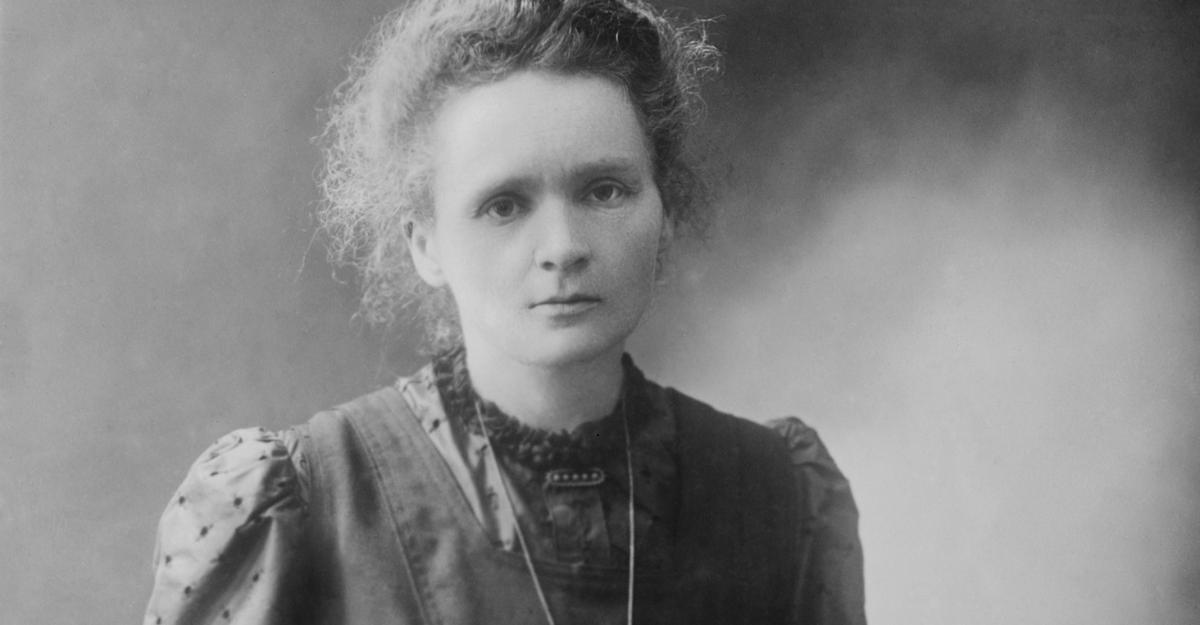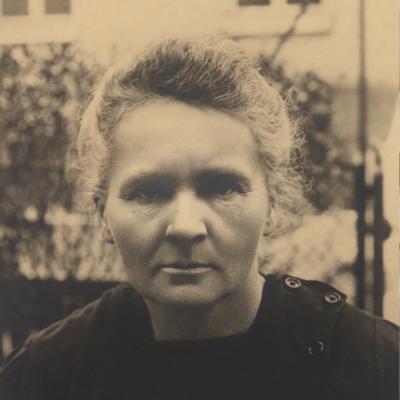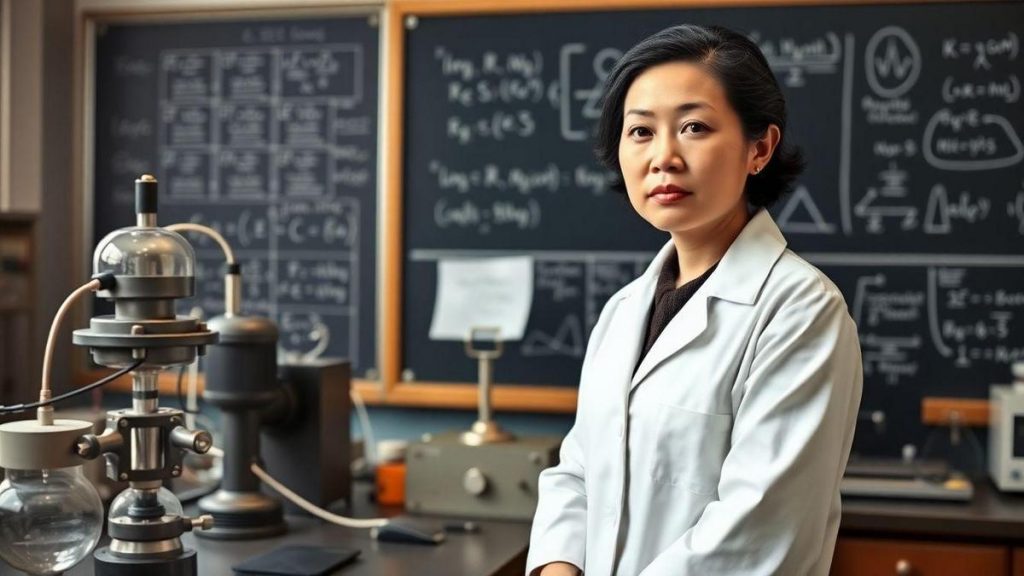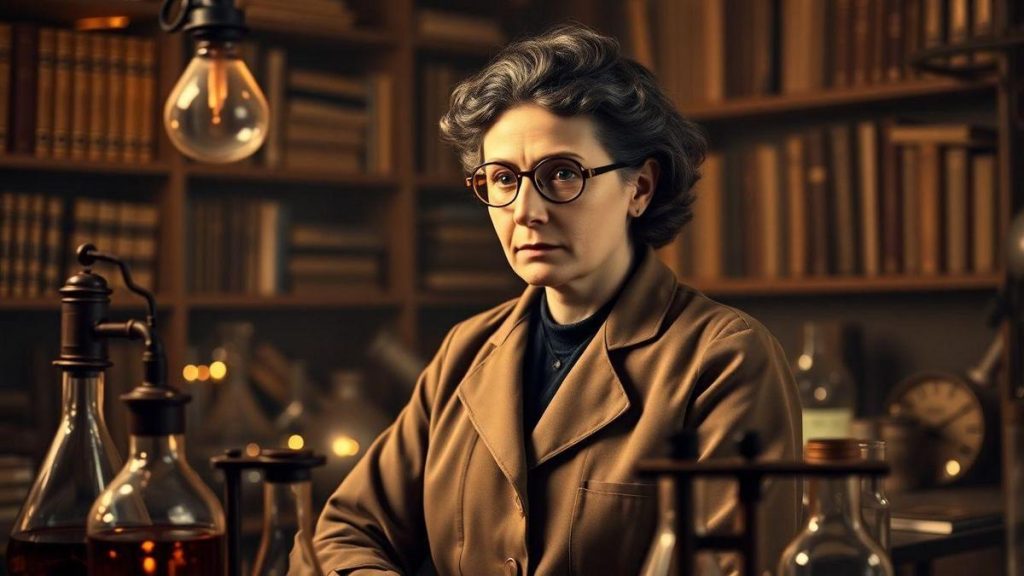Marie Curie, born in 1867 in Poland, is one of the most important scientists in history. Her pioneering work in radioactivity transformed not only physics but also medicine. Curie made history by becoming the first woman to win a Nobel Prize and the only person to be awarded in two distinct scientific fields.
Her life was marked by struggles against personal and social difficulties, including gender barriers and lack of resources. However, her persistence and dedication to science made her a global reference, establishing new research standards and paving the way for other women in the field of science.

The challenges faced by Marie Curie in her scientific journey
Marie Curie faced significant challenges throughout her career. She not only fought against gender discrimination but also had to deal with a lack of resources and financial support for her research. Often, she worked under adverse conditions in makeshift laboratories where safety was not a priority.
The resistance from her contemporaries was also an obstacle. Being a woman, Curie had to earn the respect of a predominantly male scientific community, and many times her discoveries were minimized or ignored. Even so, she persisted with her research.
Another major challenge was her health. Working with radiation, without the knowledge of its harmful effects, took a heavy toll on Curie. She eventually suffered the consequences of her constant exposure, leading to serious health problems later on.
Despite these difficulties, Curie never allowed obstacles to stop her from following her path. She faced adversity with courage and remained true to her mission of exploring the mysteries of radioactivity.
The lasting impact of Marie Curie’s discoveries
Marie Curie’s discoveries continue to influence modern science. Her research on radioactivity paved the way for the development of new technologies and applications in various fields, including medicine. The use of radiation in cancer treatment, for example, is one of the most enduring legacies of her work.
Furthermore, Curie’s investigations into atomic structure contributed to the fundamental understanding of modern physics. Her contribution was essential for advances in nuclear theories and the development of nuclear energy technologies.
The impact of her discoveries was also crucial for quantum physics. Curie’s research helped establish the foundation for new studies on the nature of matter and energy, fields that continue to be explored by scientists worldwide.
Through her dedication and passion for science, Curie not only made transformative discoveries but also left a legacy that continues to inspire generations of scientists to seek the unknown.
The life of Marie Curie and her contribution to science
Marie Curie, born Maria Skłodowska on November 7, 1867, in Warsaw, Poland, is one of the most prominent figures in the history of science. She was the first woman to win a Nobel Prize and the only person to receive the award in two different scientific disciplines: Physics and Chemistry. Curie devoted her life to studying radioactivity, a term she coined herself, and her discoveries had a profound impact on modern science, especially in the fields of physics and medicine. Her journey was marked by the struggle against gender barriers, poverty, and a lack of recognition in a male-dominated field, but her persistence and passion for science led her to become one of the most respected scientists in the world.
Marie Curie’s contribution to science goes beyond her individual discoveries. She set new research standards and opened doors for future generations of scientists, especially women, at a time when science was widely considered a male activity. Curie not only discovered radioactive elements, such as polonium and radium, but also developed techniques to isolate these elements, allowing other scientists to explore their properties. Her life and work continue to inspire and challenge social conventions, showing that determination and scientific curiosity can overcome any obstacle.
How Marie Curie’s discoveries and persistence revolutionized radioactivity

Marie Curie’s discoveries were fundamental to understanding radioactivity, a natural phenomenon involving the emission of radiation by certain chemical elements. Radioactivity was initially discovered by physicist Henri Becquerel, but it was Marie Curie who deepened the research in this field, revealing the complexity and importance of this phenomenon. Curie and her husband, Pierre Curie, conducted meticulous experiments that led to the discovery of two new elements: polonium and radium. From her investigations, she demonstrated that radioactivity was not just a superficial phenomenon, but an intrinsic property of certain atoms that could be studied and understood.
Curie’s persistence in her research was remarkable. Throughout her scientific journey, she faced numerous difficulties, including lack of funding, resistance from her contemporaries, and the limitations imposed by being a woman in a predominantly male field. However, her determination to understand radioactivity and its practical applications led her to conduct innovative experiments that not only expanded scientific knowledge but also established new research methods. Curie spent long hours in makeshift laboratories, often under precarious conditions, but her passion for science never waned.
In addition to her discoveries, Marie Curie was also a pioneer in the way scientific research was conducted. She emphasized the importance of rigorous scientific methodology and precise documentation of experiments, which helped establish standards still followed today. Her systematic and methodical approach not only ensured the validity of her discoveries but also inspired other scientists to adopt similar practices. The way Curie conducted her research reflects her belief that science should be accessible and understandable to all, not just to an elite.
Curie’s discoveries and her persistence in the face of significant challenges not only revolutionized the understanding of radioactivity but also opened new frontiers in scientific research. Her work led to advancements in areas like medicine, where radium was used in cancer treatment, and in physics, where the understanding of radioactivity helped develop theories on atomic structure. The impact of her discoveries continues to be felt today, and her life is a testament to the power of determination and scientific curiosity.
The advantages of understanding Marie Curie’s persistence in revolutionizing radioactivity
Understanding Marie Curie’s persistence in revolutionizing radioactivity is crucial to recognizing the importance of scientific work and the impact that determined individuals can have in their fields. Curie’s journey offers valuable lessons about the importance of resilience and dedication in the pursuit of knowledge. In a world where challenges may seem insurmountable, Curie’s story serves as a beacon of hope and inspiration for those aspiring to make meaningful discoveries.
One of the main advantages of studying Marie Curie’s life and work is understanding the role persistence plays in science. Curie faced numerous adversities, from gender discrimination to lack of financial resources, but her determination to continue her research led to discoveries that changed the course of science. This persistence is a powerful example of how dedication and hard work can overcome obstacles and lead to extraordinary results.
Furthermore, Curie’s story highlights the importance of innovation and creativity in scientific research. In a field that was in its early stages of development, Curie not only made discoveries but also developed new techniques and research methods that allowed other scientists to explore radioactivity in ways that were previously not possible. Her ability to think outside the box and approach complex problems in an innovative way is a valuable lesson for all scientists.
Finally, Marie Curie’s life exemplifies the importance of collaboration and mutual support in science. Although she faced many challenges alone, Curie also relied on the partnership of her husband, Pierre, and the support of other scientists throughout her career. This emphasis on collaboration and the exchange of ideas is vital for scientific progress, and Curie’s story reminds us that, even in competitive fields, teamwork can lead to significant discoveries.
How Marie Curie’s persistence impacted radioactivity research

- The importance of dedication in science: Marie Curie’s dedication to her research is a clear example of how passion and commitment can lead to significant discoveries. Her willingness to work long hours under difficult conditions demonstrated that persistence is essential for scientific success.
- Marie Curie’s influence as a woman in science: As one of the first women to excel in a male-dominated field, Curie broke barriers and paved the way for future generations of women in science. Her presence and success helped challenge gender stereotypes and opened doors for female inclusion in scientific fields.
- The challenges faced by Marie Curie in her journey: Curie faced many challenges throughout her career, including discrimination, lack of funding, and the fight to be recognized by her peers. However, her ability to overcome these obstacles is an essential part of her story and a testament to her strength of character.
- The lasting legacy of Curie’s discoveries: Marie Curie’s discoveries continue to have a significant impact on modern science. Her research on radioactivity opened new areas of investigation and led to advancements in several disciplines, including medicine and nuclear physics.
- The medical application of Curie’s research: Curie’s work had significant practical applications, especially in cancer treatment. The use of radium in radiation therapies revolutionized medicine and offered new hope for cancer patients, demonstrating the importance of scientific research in improving human health.
- The impact of radioactivity on modern science: The understanding of radioactivity, driven by Curie’s discoveries, transformed physics and chemistry. The study of radioactivity led to new theories about atomic structure and the exploration of nuclear energy, which continues to be a vital research area in contemporary science.
Marie Curie’s persistence not only revolutionized radioactivity research but also left a lasting legacy that continues to inspire scientists worldwide. Her commitment to science and her ability to overcome challenges are a powerful example of what can be achieved through determination and passion.
Did you enjoy learning about Marie Curie’s persistence that revolutionized radioactivity?
The life and contributions of Marie Curie are an inspiring testament to the human capacity to overcome challenges and make significant discoveries. Her persistence not only transformed the understanding of radioactivity but also paved the way for future generations of scientists, especially women. Curie’s story teaches us that dedication and passion for science can lead to extraordinary results.
If you are interested in Marie Curie’s life and achievements, there is much more to explore about her research, discoveries, and impact on modern science. Curie’s journey is a source of inspiration that continues to motivate scientists worldwide to fight for their dreams and contribute to the advancement of knowledge.
Frequently asked questions
Who was Marie Curie?
Marie Curie was a famous scientist. She discovered radioactive elements such as radium and polonium.
What is radioactivity?
Radioactivity is the release of energy by unstable atoms. These atoms decay and emit radiation.
Why was Marie Curie’s persistence important?
Marie Curie’s persistence helped her face many challenges. She continued her research despite difficulties and prejudice.
How did Marie Curie revolutionize science?
Marie Curie revolutionized science by opening new pathways in physics and chemistry. Her research on radioactivity changed medicine and science.
What prizes did Marie Curie receive?
Marie Curie was the first woman to win a Nobel Prize. She won in Physics and later in Chemistry for her discoveries.




